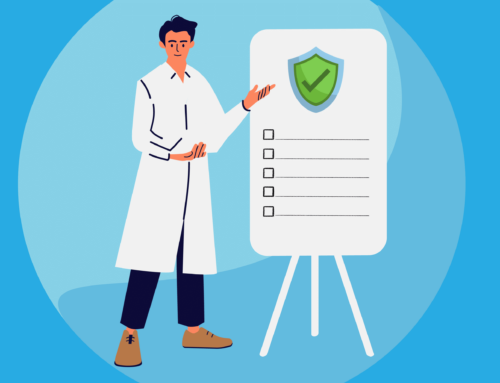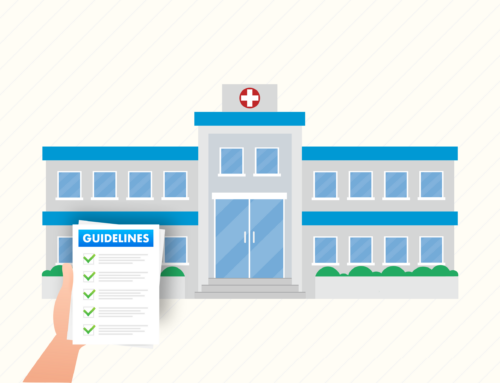In the healthcare industry, safety and compliance are of utmost importance. Whether you’re a patient seeking medical care or a healthcare professional providing it, ensuring a safe working environment is crucial. This is where OSHA (Occupational Safety and Health Act) plays a vital role in maintaining workplace safety standards across various industries, including medical offices.
Understanding OSHA’s Significance
OSHA is an agency established by the United States Department of Labor to enforce regulations to protect workers from hazards that may lead to injuries, illnesses, or even fatalities. In medical offices, OSHA guidelines help safeguard employees and patients against potential risks associated with various aspects of healthcare delivery.
The OSHA Checklist for Medical Offices: A Comprehensive Approach
Medical offices must adhere to specific protocols and implement safety measures to ensure compliance with OSHA regulations. By following a medical office OSHA compliance checklist, healthcare professionals can create a safer environment for everyone involved. Let’s explore some key areas covered in this checklist.
1. Hazard Communication
Medical offices deal with numerous chemicals and hazardous substances daily. Proper labeling, identification, storage, and training on handling these materials are essential to minimize risks. OSHA mandates that comprehensive hazard communication programs be in place to educate employees about potential dangers and provide guidance on proper handling techniques.
2. Bloodborne Pathogens
Given the nature of medical procedures conducted within these facilities, exposure to bloodborne pathogens such as hepatitis B virus (HBV), hepatitis C virus (HCV), and human immunodeficiency virus (HIV) poses a significant risk. Compliance with OSHA’s Bloodborne Pathogens Standard requires implementing universal precautions, using personal protective equipment (PPE), providing vaccination options, and establishing appropriate waste disposal procedures.
3. Emergency Preparedness
Medical offices must be well-prepared for emergencies, including natural disasters, fires, or medical emergencies. OSHA guidelines emphasize the development of emergency action plans, regular drills to ensure staff familiarity with procedures, and proper maintenance and testing of emergency equipment like fire extinguishers and alarms.
4. Ergonomics
Healthcare professionals often perform tasks that require repetitive motions or prolonged periods of standing or sitting. To prevent musculoskeletal disorders and injuries resulting from poor ergonomics, OSHA suggests implementing ergonomic principles in the workplace design, providing adjustable furniture and equipment, and offering training on safe lifting techniques.
5. Electrical Safety
Medical offices heavily rely on electrical equipment for various purposes. It is essential to regularly inspect electrical systems, cords, outlets, and appliances to identify potential hazards such as frayed wires or overloaded circuits. Compliance with OSHA’s electrical safety standards can help minimize the risk of electrical accidents or fires.
6. Personal Protective Equipment (PPE)
To protect healthcare workers from exposure to infectious materials and hazardous substances, OSHA requires medical offices to provide appropriate personal protective equipment such as gloves, masks, goggles, and gowns. Regular training sessions on PPE usage are crucial to ensure that employees understand how to properly put on and take off protective gear.
Maintaining OSHA Compliance: A Continuous Effort
Compliance with OSHA regulations is not a one-time task; it necessitates ongoing efforts by medical office administrators and staff members. Conducting regular inspections, addressing identified hazards promptly, and documenting safety training provided to employees – all contribute to maintaining a safe working environment.
OSHA plays a vital role in ensuring workplace safety across industries – including medical offices – where risks are inherent. Healthcare professionals can proactively address potential hazards and establish a safe environment by following an OSHA checklist for medical office compliance. Upholding these standards protects employees and enhances patient outcomes, establishing medical offices as beacons of safety and care in the healthcare landscape.
Compliancy Group: Streamlining OSHA for Medical Offices
Compliancy Group offers comprehensive OSHA software to help medical offices ensure compliance with OSHA regulations. Our expertise in healthcare compliance provides medical offices with easy-to-use tools and resources to create and manage OSHA plans effectively. Compliancy Group’s software simplifies the process by providing customizable templates, automated reminders for task completion, and real-time progress tracking. By utilizing Compliancy Group’s services, medical offices can efficiently navigate the complexities of OSHA regulations and maintain a safe working environment for staff and patients.








